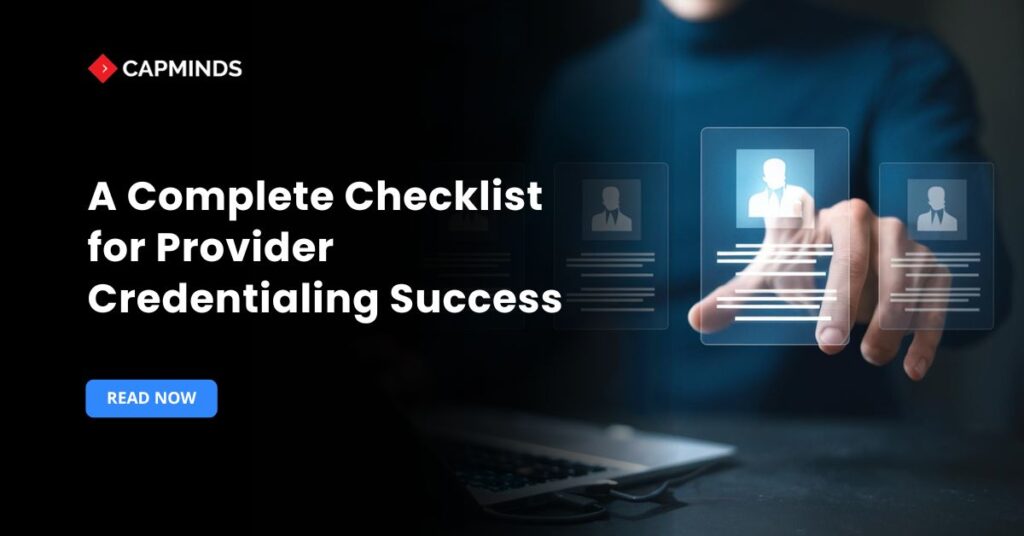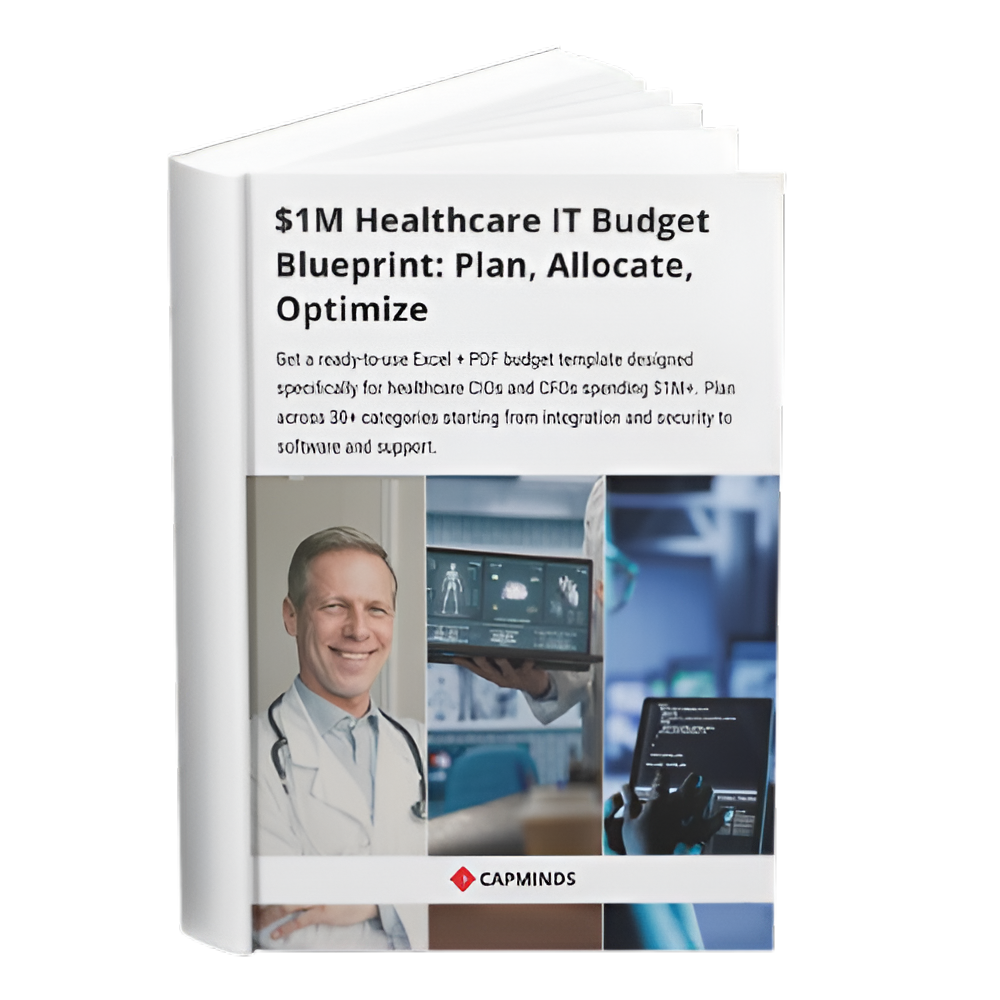A Complete Checklist for Provider Credentialing Success
The official procedure known as credentialing verifies that medical professionals, including doctors, therapists, and allied health professionals, have the necessary training, education, licenses, and professional credentials to treat patients. This stage is necessary before hospitals, insurance networks, and federal healthcare programs can offer providers clinical privileges or network participation.
For example, before a provider can submit claims for Medicare or Medicaid, the Centers for Medicare & Medicaid Services (CMS) requires credentialing. In a similar vein, companies looking to get Joint Commission certification need to demonstrate that they have a robust credentialing mechanism.
Financial stability and patient treatment are directly impacted by Healthcare Provider credentialing. Providers are unable to see patients or receive payment without it. However, the procedure is time-consuming and intricate. It can take anything from three to six months on average, and longer if applications are delayed.
This manual provides healthcare professionals with a concise checklist that includes doable tasks, suggested resources, and reasonable deadlines. Additionally, it identifies typical problems and offers helpful advice to assist teams in completing credentialing more quickly and accurately.
Credentialing Step-by-Step Checklist
Obtaining documents, filling out applications, confirming data, and completing each stage are all necessary to finish credentialing. Every significant stage and important action to take is listed in the table below. When onboarding or enrolling new providers, use this as a workable checklist:
1. Gather Core Documents
Collect all personal and professional records ahead of time. This includes
- Government ID (driver’s license, passport, SSN)
- NPI and tax IDs
- Diplomas/transcripts
- Resumes/CVs
- CV snapshots.
A copy of your state medical (or therapy) license, DEA or controlled-substances certificates, specialty board certifications, and any professional qualifications should be on hand.
Obtain proof of liability insurance, current malpractice insurance declarations and claims history, and health and immunization records. Verify that the information on your AMA or professional profiles (such as the AMA Physician Profile) is current.
2. Update CAQH ProView (or Equivalent)
If credentialing with health plans, enroll in CAQH ProView. CAQH’s centralized portal lets providers enter and verify their information once and share it with multiple insurers.
Over 2.5 million providers use CAQH to eliminate redundant paperwork. Log in to CAQH, update or complete your profile, and attest annually to speed all insurer applications. This step saves time downstream by pre-populating data for each payer.
3. Obtain/Confirm Provider Identifiers
Use NPPES to apply for or validate your National Provider Identifier (NPI). Enroll in Medicare and Medicaid if needed (via PECOS); keep in mind that CMS enrollment may take an additional 60 to 90 days.
Additionally, enroll in any state’s Children’s Health Insurance Program (CHIP) or Medicaid programs. Last-minute eligibility lapses are avoided by keeping these IDs on hand.
4. Complete Credentialing Applications
Fill out credentialing applications for each plan or facility. For insurers, you may use CAQH forms or plan-specific packets. Fill out the medical staff or allied health credentialing form to obtain hospital privileges. Make sure all forms utilize the same dates and wording to maintain consistency.
Verify again that each field is filled in. AMA emphasizes that incomplete applications are “one of the biggest speed bumps” in the process. Submit forms, required attachments, and reference letters simultaneously to avoid delays.
5. Submit Primary Source Verifications
Once applications are submitted, begin primary-source verification. Contact original issuers to confirm each credential. Key items to verify (and document) include:
- State licensure
- DEA registration
- Medical/dental/therapy education and training
- Specialty board certifications
- Malpractice insurance status and claims, work history (with explanations for any gaps), and any sanctions or disciplinary actions.
NCQA standards require organizations to verify these credentials by primary sources (boards, schools, etc.) and record the source and date of each check. Keep copies (screen prints or certificates) of each verification.
6. Follow Up and Track Progress
To keep an eye on every applicant, use a credentialing program or monitoring system. Keep track of due dates (such as Medicare/Medicaid expirations) and promptly alert people of any documents that are missing.
Regularly follow up with reference contacts and previous employers, unreturned reference requests are a common delay. If a reference or school is slow, escalate or use alternate contacts. Maintain a checklist or spreadsheet (like this one) so nothing is overlooked.
7. Credentialing Committee Review
After verifications, the provider’s file goes to the medical staff or plan credentialing committee. Ensure all documentation is organized and cover letters/summaries are provided if needed.
Be prepared to answer questions; transparency helps. Note that committee meetings may be monthly or quarterly, so plan for this in advance. According to NCQA, such committees must document decisions and have clinical representation.
8. Receive Approval and Onboarding
Once approved, you will receive formal notification (letters, emails) of credentialing and privileges. Confirm that your provider profile is added to hospital/hospital directories and insurer networks. Update any online provider directories or group rosters. Check that payers have your correct reimbursement details to avoid claim holds.
9. Maintain Credentials and Recredential
Maintain a master file of all credentials. Before their expiration, set calendar reminders to renew licenses and certificates and re-attest CAQH. Make plans for the next renewals because NCQA mandates recredentialing at least every three years. For re-enrollment, save copies of your most recent resume, licenses, and certificates. Additionally, do continuous sanctions monitoring; to identify exclusions early, it is advised to conduct monthly checks against OIG/SAM databases.
Each step above is crucial. The most common reason for delays in credentialing is incomplete or missing documentation. As you complete tasks, use this checklist to collect files. Being proactive, for example, updating CAQH and securing references ahead of time, can often cut weeks off the timeline.
Related: 7 Essential Stages in the Provider Credentialing Process You Need to Know
Tools and Software to Streamline Credentialing
Modern practices rely on specialized tools to automate and track credentialing. Below are recommendations:
1. CAQH ProView
A free centralized provider database. With 2.5+ million providers enrolled, CAQH ProView allows practitioners to maintain one profile that is shared with all participating health plans. This eliminates re-entering data for each insurer and ensures consistency. CAQH also offers automated Primary Source Verification modules and daily sanctions monitoring to streamline NCQA compliance.
2. Credentialing Management Software
Commercial platforms, for instance, Symplr Provider, VerityStream/CredentialStream, Modio Health, Verisys Connect, can automate many steps. These systems integrate with EHRs, CAQH, and payer portals to auto-fill data, run verifications, and alert you to expirations.
Credentialing software that is properly implemented can reduce the FTE burden by 30 to 50% and shorten onboarding from around 45 days to approximately 15 days.
Automated license and sanction checks, workflow alerts, report dashboards (which track days to credential or refused claims), and payer network connectivity are important elements to seek.
3. E-Signature & Document Management
Credentialers have immediate access to documents, and providers can sign applications remotely by using e-signature solutions (DocuSign, Adobe Sign) and secure cloud folders (Box, SharePoint). Data entry is accelerated by digital document capture (scanning, OCR). Many credentialing platforms include mobile capture so providers can submit documents via smartphone.
4. CVO / Outsourcing Services
For practices that prefer to delegate, Credentialing Verification Organizations (CVOs) like Verisys or local medical societies can handle verifications and follow-up. These vendors maintain relationships with schools and boards to speed responses.
For example, Verisys touts “industry-leading tools” and continuously updated provider data to improve accuracy and turnaround. Outsourcing parts of credentialing can free your staff for other tasks. Whether handled in-house or by a CVO, always ensure any vendor follows NCQA/URAC guidelines and documents each verification.
5. Scheduling and Tracking Tools
To keep track of applications submitted, committee dates, and expiration notifications, keep a shared calendar or credentialing log (even a basic Excel or Google Sheets file). Some companies visualize the progress of each supplier using Gantt charts or Kanban boards (like Trello). Setting reminders for license renewals and recredentialing deadlines, NCQA mandates recredentialing every 36 months is crucial for visibility.
Using technology smartly can dramatically reduce errors and time. For example, CAQH’s data suite automates much of credentialing: “providers enter data once and it is shared with all plans they designate,” improving data quality and cutting redundant steps.
Credentialing software with CAQH integration can automatically populate insurer applications and flag missing items. As one user noted, credentialing systems generate automatic alerts and e-sign options so providers “avoid repetitive form submissions” and start treating patients faster.
Sample Credentialing Timeline
The credentialing process spans several stages. Below is a typical timeline (initial credentialing for a new provider), with approximate durations. (Timelines vary by organization; re-credentialing is usually faster.)
| Stage | Typical Duration |
| Application & Intake | ~1 week (1–2 days to submit forms + 3–5 days to check completeness) |
| Primary Source Verification (PSV) | ~4–6 weeks (verifying licenses, education, certifications, etc.) |
| Committee Review | ~2–4 weeks (credentialing committee evaluates file and makes decisions) |
| Finalization & Enrollment | ~1–2 weeks (notify provider, update directories, begin payer enrollment) |
Overall, initial credentialing often takes 3–5 months from start to finish. For example, one industry analysis found the average timeline is 90–150 days, with the fastest cases (perfect documentation) around 45–60 days and complicated cases over 6 months.
Hospitals alone may take 60–120 days, insurers 90–120 days, and Medicare 60–90 days for processing. Starting credentialing early – ideally 4–6 months before the provider begins practice- builds in a buffer for these multi-week steps.
Related: Transforming Healthcare Credentialing in 2025: Best Practices and Challenges
Best Practices to Avoid Delays
1. Start Early
- Begin the credentialing process well before a provider’s start date.
- Starting as soon as possible and being proactive, even though the application may take 90–120 days, starting early prevents delays later.
- Plan on a 3–6 months lead time for a new hire.
2. Complete, Accurate Applications
- Incomplete or inconsistent forms are the #1 cause of delay.
- Cross-check every application field against your master documentation.
- When in doubt, over-disclose rather than omit.
- If you’re unsure whether to disclose something…just do it.
- Make sure names, dates, and license numbers match exactly across all documents and applications.
3. Stay Organized
- Keep digital and paper files of all credentials in one secure place.
- Use the checklist above to mark off received items.
- Many practices maintain a “credentialing binder” or shared drive folder with subfolders (e.g., “Applications – Payers,” “Docs – Licenses,” etc.).
- Organized records make it easy to update applications and answer any committee or payer queries.
4. Track Progress
- Monitor each application weekly.
- Use workflow software or even a simple spreadsheet to record submission dates, expected completion dates, and the current status.
- Assign a coordinator to follow up with plans or hospitals that are slow to respond.
- Set calendar reminders for key deadlines (e.g., “Follow up with ABC Insurance in 30 days”). Responding promptly to requests and maintaining current reference contact information as essential prevention steps.
5. Maintain References
- Credentialing applications often require 2–3 professional references.
- Ensure your references know they will be contacted, and have up-to-date contact information for them.
- Unreturned reference requests can stall the process.
- Consider providing references with a template or form to speed their response.
6. Use Pre-Applications
- If possible, start enrollment with payers even before employment.
- CAQH allows pre-credentialing in many cases.
- You can also submit Medicare pre-applications in PECOS.
- Identifying and fixing issues early means a smoother final push.
7. Monitor Sanctions Continuously
- Even after initial credentialing, run monthly exclusion checks against OIG, SAM/GSA, and state boards.
- NCQA requires tracking for sanctions or disciplinary actions.
- Set up auto-monitoring or alerts (some CAQH and software solutions offer this).
- Catching issues early (and removing a provider from networks if needed) prevents compliance gaps.
8. Maintain Licenses/Certs
- Don’t let licenses or certificates lapse.
- Many plans require up-to-date credentials.
- Use automated reminders (calendar alerts or your EHR) to renew state licenses, DEA registrations, board certifications, and ACLS/BLS certificates well before expiration.
9. Communicate with Providers
- Keep providers informed of progress.
- Automated status portals (many CVOs/platforms offer them) allow doctors/therapists to see where their application stands.
- Clear communication helps prevent confusion and duplicate submissions.
Related: A Guide to Credentialing in the Medical Billing Process
By following these best practices, healthcare organizations greatly reduce the risk of credentialing bottlenecks. Well-implemented processes and technology can substantially speed up onboarding, with some reports indicating that practices cut onboarding time from ~45 days to ~15 days with automation. Remember that every day a new provider waits for credentialing is lost revenue and patient access.
Sample Timeline Illustration
To visualize the process, consider this example timeline for initial credentialing:
- Month 0: Candidate hired. The credentialing coordinator gathers all documents, updates CAQH, obtains NPI/Medicare info, and submits initial applications to insurers and the hospital.
- Month 1: Applications reviewed for completeness (1–2 weeks). The credentialing team begins primary-source verifications (e.g., calls to licensing boards and schools). This stage often takes 4–6 weeks while waiting for responses.
- Month 2: Verification nears completion. The compiled file is sent to the credentialing committee or HR review board. This committee typically meets monthly and takes 2–4 weeks to review files and vote.
- Month 3: Provider receives approval letter (or queries) within 7–14 days of committee decision. Meanwhile, enrollment packets are finalized. The provider is added to hospital rosters and payer networks.
Need Help with Credentialing in Medical Billing? CapMinds will assist you
The Medical Billing and Credentialing process can be complex, especially for healthcare providers. However, it is associated with various challenges that may affect healthcare practices’ financial health.
At CapMinds, we are bringing a comprehensive medical credentialing services to make the process easier.
Our team of experts will ensure that the whole credentialing process in the medical billing process is smooth without any mistakes. Utilizing our service, healthcare providers can ensure:
- 24/7 Support: Always available for your queries.
- Dedicated Client Manager: Personalized service for your practice.
- Efficiency and Accuracy: Streamlined billing, fewer claim denials.
- Financial Optimization: Maximize revenue and correct underpayments efficiently.
- Enhanced Cash Flow: Timely collections and improved financial management.
- Compliance and Security: Adhere to industry standards always.
We help you to gather all the necessary information accurately, complete the application form, and submit the credentialing essentials to payers, thereby achieving better clinical and service expansion.
We also have a dedicated client manager who will be exclusively assigned to you. And the team will be available around the clock to assist with your queries.
“Reach out to CapMinds to make your credentialing in the medical billing process more effective.”




